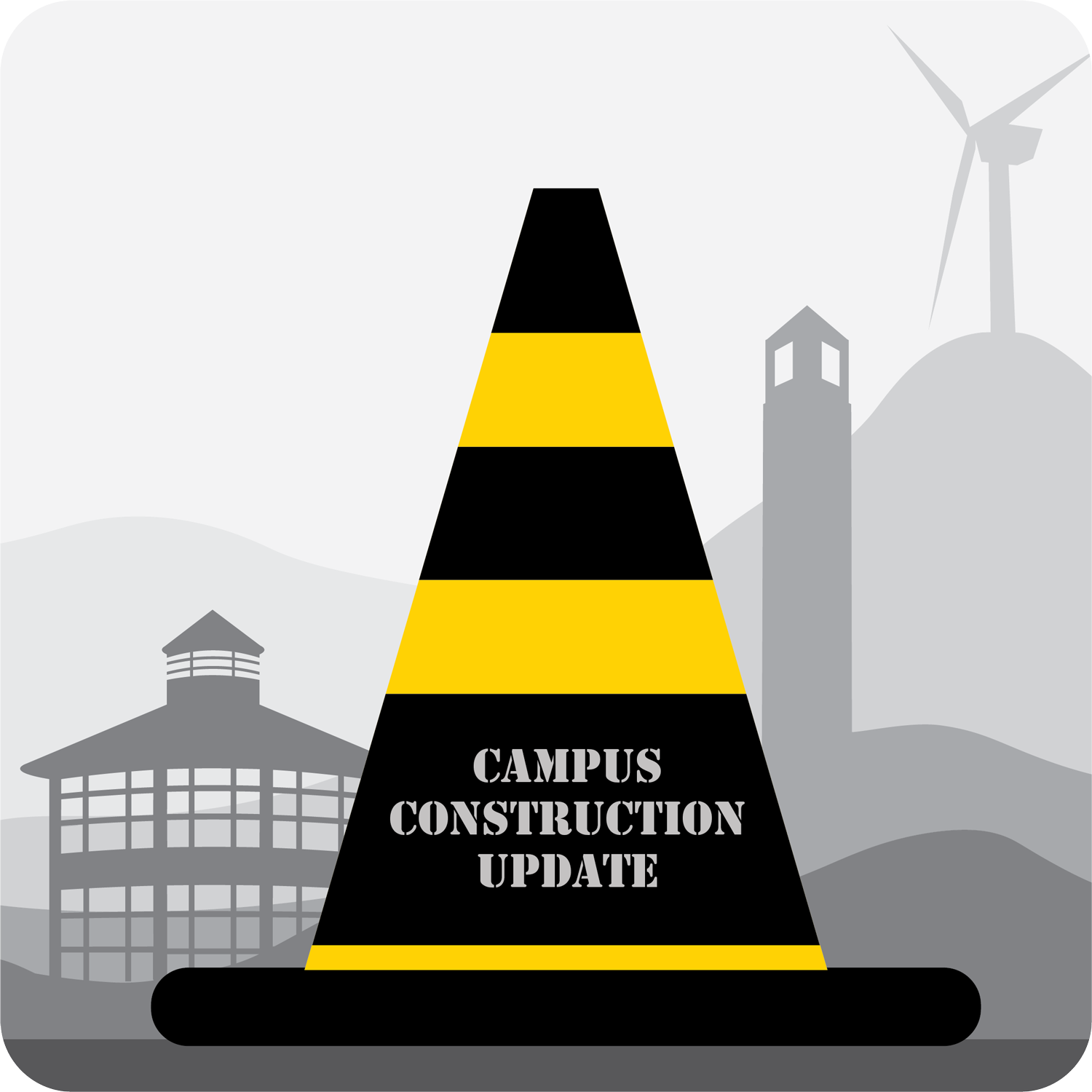Campus Construction Update, Jan. 21, 2019
Assistant Vice Chancellor for Finance and Operations Matt Dull explains the P3 (public private partnership) currently in progress on campus. He gives an overview of all three phases of the project and the changes to be expected on the West side of campus.
*Please note: References in this conversation to "Schaefer Auditorium" and "Farthing Auditorium" are intended to indicate the Schaefer Center for the Performing Arts.
Transcript
Dave Blanks: Hi folks, this is Dave Blanks from University Communications, and I'm visiting today with Matt Dull. Matt is the assistant vice chancellor for finance and operations, and he is closely involved with the construction projects that we have going on around campus. Is that right, Matt?
Matt Dull: Yeah, that's right.
Dave Blanks: Excellent. Well, thanks for taking time to be with me today.
Matt Dull: Absolutely. Thanks for the time.
Dave Blanks: So, these podcasts, since this is the first one, are going to be regular updates, right?
Matt Dull: That's right.
Dave Blanks: So, we're going to regularly update everyone on the freshest P3 construction information. Why are you the person I'm talking to about this? That would be a good question.
Matt Dull: Yeah. So, I work with Student Affairs areas and their finance and budgets and capital projects. So, this is a big project for University Housing, which is one of our departments, and it's a little more complicated than a normal building and construction project that we'd normally do, and so I'm more heavily involved in this project than maybe some normal construction projects or building projects.
Dave Blanks: Gotcha. So, what is a P3? What is the P3?
Matt Dull: P3 stands for public-private partnership, and there's a bunch of different terms that are out there. A common phrase we say is if you've seen one P3, you've seen one P3. Each deal is different. So, how each university may handle it may be very different from how another university may handle it. And public-private partnerships are not necessarily something new for Appalachian. We've actually been a partner in two other public-private partnerships over the past 20 years.
Dave Blanks: OK. P3 is not exactly the norm, so how is P3 different from how we normally build buildings here at Appalachian?
Matt Dull: So, normally we would build buildings at Appalachian through a design–build process. We'd select the designer. We'd select the contractor. We'd probably spend a couple of years doing the whole design for a building and then spend another 18 months to two years building a building. All of that would require approval by both University of North Carolina System Board of Governors as well as the legislature.
Matt Dull: This particular project is being built on the millennial campus, and the legislature created the Millennial Campus legislation in the early 2000s, which allowed campuses to ground lease certain parts of their campus to third party developers to actually design, develop, construct things like residence halls, hotels and a variety of other services for students, faculty, staff, community that would not necessarily have the exact same approval path as a normal state construction project. A normal project that would come where we're using state dollars to build a building on a university campus.
Dave Blanks: So it's quicker?
Matt Dull: So it's quicker.
Dave Blanks: All right. So, does it mean that we're relinquishing control or operation of the building? It sounds like ... I don’t know … does it sound like we were like pushing that off to somebody else? Is that …?
Matt Dull: Yeah, that's a good question. So, in our particular model of our public-private partnership, we're really not relinquishing any control. So, our staff over in University Housing, our staff in Design and Construction are actively involved every day in the design decisions. The developer has to follow our design standards that the university already has. So, we're intimately involved in every step of the design process, which is really exciting. And the way they design and the process that we've gone through is very fast paced.
Matt Dull: So, our design committee has met for two to four hours every single week for the past six months or so to develop the design for this project. And so normally where we would meet maybe once a month, get together for a couple of hours, bring in an architect and spend kind of a year or almost two years designing a project, we've all committed to these design sprints, basically. Every week we're either on a phone call or in-person meetings moving the design forward each week, which is very different from how we would normally design a project. Takes a lot more commitment of university staff to be involved and dedicated to the project, but it means a six-month design window instead of a 18- or 24-month design window, like a normal project.
Dave Blanks: Right. OK. So, this is one building?
Matt Dull: Well actually, so, phase one is two buildings.
Dave Blanks: How many phases are there?
Matt Dull: There are three phases.
Dave Blanks: Three phases. All right.
Matt Dull: So, phase one starts, we will start construction in mid-February on the first two buildings. So, phase one is two buildings. We're now calling them building 100 and building 200. We will certainly name those buildings at some point along the way.

